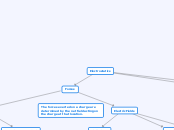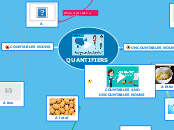requires
Net movement
Water molecules
A partially permeable membrane
A water potential gradient
With/without a membrane
A concentration gradient
affected by
like
examples
both cells have
animal cell becomes
plant cell becomes
consists 2 types
animal cell will
effects on
example
in
of
occurring
down
to
from
occurs
occurs through
involves
2 processes
involves processes like
Movement of Substances
Active Transport
Movement
Particles
Partially permeable membrane
Region of higher concentration
Region of lower concentration
Against a concentration gradient
Energy
Absorption of nutrients
Glucose and amino acids
Small intestines
Uptake of mineral salts
Root hair cells of plants
Passive Transport
No energy
Osmosis
Cells
Plant cells
Solution of higher water potential
Turgid
Burst/lyse
Animal cells
Solution of same water potential
No change
Cell size and shape
Solution of lower water potential
Plasmolysed and flaccid
Crenated
Diffusion
Rate of diffusion
Surface area to volume ratio
Concentration gradient
Temperature
Gaseous exchange
Oxygen and carbon dioxide
Lungs









